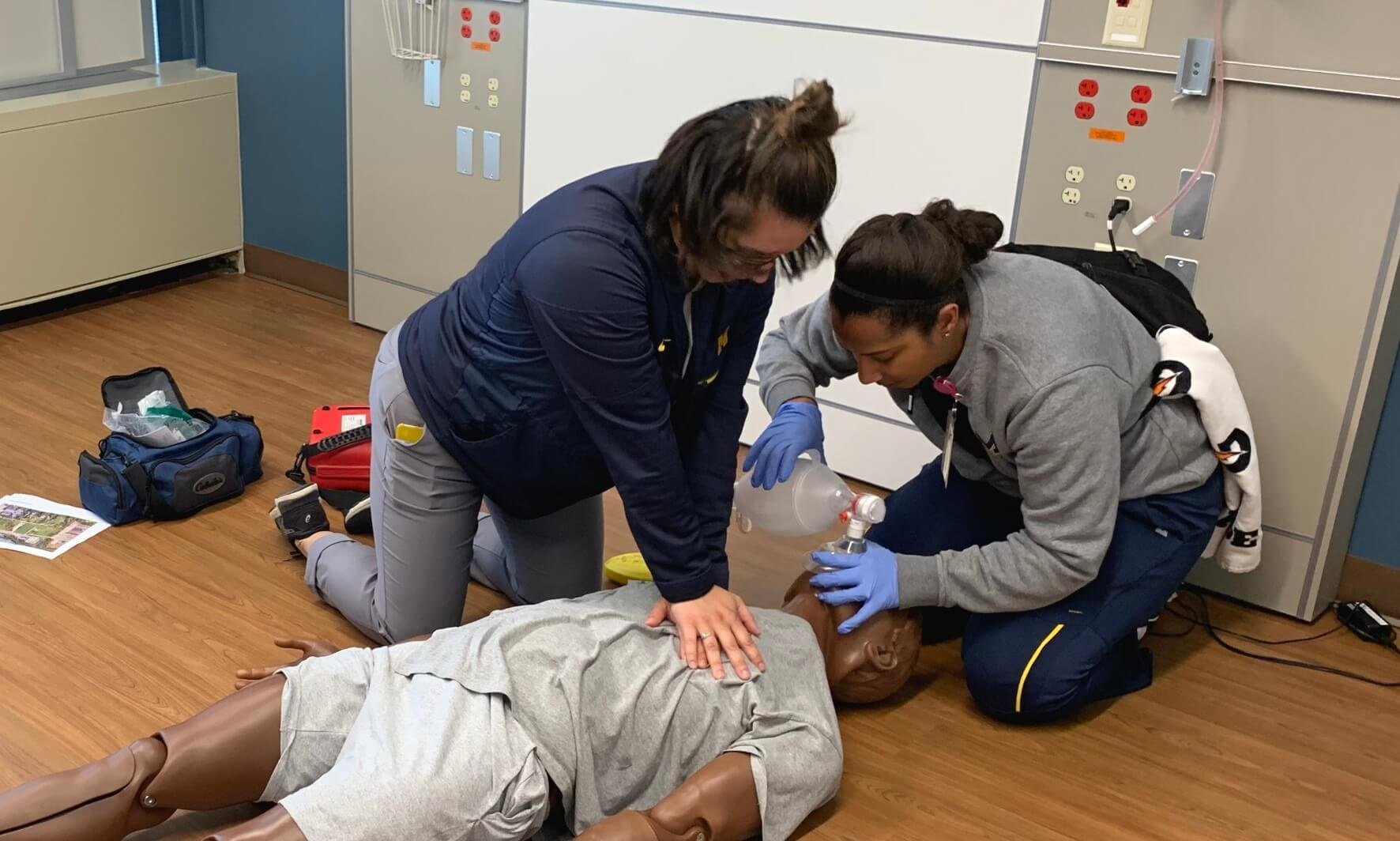
Concordia University Ann Arbor’s nursing and athletic training education departments facilitated an emergency care simulation for the University of Michigan athletic medicine team on Monday, June 3.
Taking place in CUAA’s simulation center at Concordia’s North Building (7475 Plymouth Road), 22 athletic trainers and team physicians from the University of Michigan athletic department navigated four scenario-based simulations.
The purpose? To practice teamwork and skills needed for the emergency management of likely situations that could occur within the athletic medicine profession such as manual CPR, wound packing, orthopedic injury management, exertional heat injury, head injuries, and much more.
“We were glad to welcome our fellow health care providers into our facilities and learn alongside one another with each scenario,” said Tim Neal, Concordia’s program director of athletic training education and assistant professor of health and human performance.
Related: Athletic training faculty Timothy Neal inducted into the NATA hall of fame
Neal says the simulation exercise is another part of Concordia’s growing relationship with University of Michigan. Members of Michigan’s athletic medicine team have come to CUAA’s classes to present specialized knowledge in spine injury management with athletic training students and staff and have also served as preceptors to athletic training students as they perform clinical rotations.
 Each of the simulations was intricately planned by University of Michigan athletic medicine and executed by Concordia school of nursing and athletic training faculty and staff. The state-of-the-art simulation center, complete with high fidelity manikins, volunteer actors, control rooms, fully functioning medical tools, and necessary medical equipment and supplies, was a fitting space for four fast-paced rotations including 15 minutes of the simulation followed by 20 minutes of debrief.
Each of the simulations was intricately planned by University of Michigan athletic medicine and executed by Concordia school of nursing and athletic training faculty and staff. The state-of-the-art simulation center, complete with high fidelity manikins, volunteer actors, control rooms, fully functioning medical tools, and necessary medical equipment and supplies, was a fitting space for four fast-paced rotations including 15 minutes of the simulation followed by 20 minutes of debrief.
“Simulation is a proven, highly effective teaching and learning modality, not only in the educational setting, but also in the practice environment,” said Anita Simmons, director of simulation and inter-professional education. “Even after learning the proper skills, it still takes practice to function in a timely and efficient manner as part of a team in an emergency situation.”
Related: Vital to the operation
Below is a taste of the simulated scenarios, allowing the athletic medicine professionals the chance to use effective and timely communication, inter-professional practice, and crisis management skills to have the best possible patient outcome.
It’s Tuesday, October 15, 2019 @ 4:45pm. The temperature is 56 degrees, humidity is 37%, and winds are 14 mph SSW. Men’s soccer is practicing and scrimmaging, and women’s soccer is nearby also practicing. Two student-athletes are competing for a ball in front of the goal, and they collide in mid-air.
Student athlete #1 falls to one knee momentarily then gets up and is walking around. Student athlete #2 falls awkwardly and hits his head and neck on the ground. He is bleeding from his nose and forehead. How do you respond?
 Upon the conclusion of the simulation, the groups would gather in a debriefing room and watch video of the situation they just encountered. The medical professionals were able discuss what went well and what they may have perhaps done differently.
Upon the conclusion of the simulation, the groups would gather in a debriefing room and watch video of the situation they just encountered. The medical professionals were able discuss what went well and what they may have perhaps done differently.
Neal says Concordia plans to continue partnership with University of Michigan athletic medicine to provide simulation-based trainings at Concordia. Another wave of training will take place in early August.
Learn more about Concordia’s school of nursing, athletic training, and health and human performance programs.
— Rachel Thoms served on Concordia University's Strategic Communications team from 2015-2022. Any inquiries about this story can be sent to news@cuaa.edu.
If this story has inspired you, why not explore how you can help further Concordia's mission through giving.